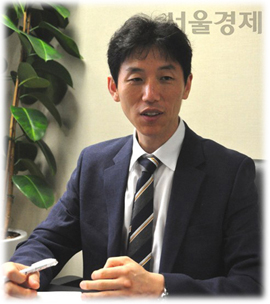| 일 | 월 | 화 | 수 | 목 | 금 | 토 |
|---|---|---|---|---|---|---|
| 1 | 2 | 3 | 4 | 5 | ||
| 6 | 7 | 8 | 9 | 10 | 11 | 12 |
| 13 | 14 | 15 | 16 | 17 | 18 | 19 |
| 20 | 21 | 22 | 23 | 24 | 25 | 26 |
| 27 | 28 | 29 | 30 |
- Political power
- Political Regimes
- the 3rd Law of politics
- Operation of the 2nd Law
- political phenomena
- 1st Law of politics
- Samjae Capacity
- politics
- the 2nd law
- Canonical Politics
- Cohesion Force
- Political Change
- Mathematical Model of politics
- politics and war
- new political science
- Order of Choice
- survival process theory
- Regime Change
- political organization
- Political Regime
- Differences in Individual Abilities and Tendencies
- power and organization
- mechanism of politics
- politics of Inner Circle
- Mathematical Model of political science
- Orderliness of Choice
- Samjae Capacities
- Power
- Value Systems
- Task Delegates of the Ruler: Inner Circle
- Today
- Total
New Political Science
a. ㉢ Ideological Diversity 본문
㉢ Ideological Diversity
The second concept is ideological diversity( \( [Iv] \) ), which is also a factor of political crisis. Ideological diversity refers to how different and diverse the thoughts and values of political organization members are. Various ideologies, religions, cultures, and arts increase ideological diversity. If ideologies and religions are extremely different, they can lead to separation or attempts to kill each other. In medieval Europe, continuous theological disputes led to the separation and division of Western and Eastern Christianity. People's ideas determine their actions. In the 19th century, many white Americans believed that Native Americans were "originally inhuman and impossible to coexist with" and became obsessed with "exterminating" them.
The diversity of political actors' thoughts and values can cause conflicts, divisions, and confusion within political organizations. In Mecca in the 7th century, before the appearance of Muhammad, people suffered from social conflict and moral confusion due to the coexistence of various religious beliefs, different views of life, and values. In the Abbasid regime of Iran in the 8th century, the emergence of various religions led to social and political conflicts, along with much resistance to the Abbasid regime. In the Buwayhid dynasty period of Islam (932- 1055), the increase in the complexity and diversity of society, namely ideological diversity( \( [Iv] \) ), was also a factor that caused serious tension and spread of discord. In 17th century England, the coexistence of Catholicism, Protestantism, and the Church of England (Anglicanism) led to conflict, resulting in the "Bishops' Wars" during the reign of Charles I (1625-1649). In early 20th century China, new cultural and ideological movements, such as freedom, civil rights, anarchism, and socialism, were introduced to the Chinese people through students who studied in Japan, and this increase in ideological diversity was also the cause of the emergence of antigovernment organizations such as the Hongjun Association, the Huahui Society, and the Kuomintang. In the 1960s in the American South, people believed in the rights of each state (州) like a religion, so they hesitated to join the solidarity of southern states during the Civil War. Due to this, the increase in ideological diversity has also been used as a means to weaken other political organizations. An example of this is Russia and Prussia, who supported Orthodox and Protestant sects politically in Poland, along with the Catholic mainstream, using religious tolerance principles to weaken Polish unity from 1766-1768.
Various factors, such as race, kinship, and geography, in addition to ideological diversity, can influence cohesion force. For example, when white Americans oppressed Native Americans in the mid- 19th century, the Indians on the plains could not unite against white attacks because "the diversity of the tribe's composition prevented it." However, these factors seem to create rather than directly affect political cohesion. For example, Korean Americans who were raised in the United States may be more active in political solidarity with the United States than children of American expatriates raised in Korea because their beliefs and culture (ideology) are more similar to those of the United States than their race.
'Mechanism of Politics' 카테고리의 다른 글
| a. ㉤ Armament Level (0) | 2023.12.12 |
|---|---|
| a. ㉣ Cohesion Force (0) | 2023.12.12 |
| a. ㉡ Invasion Threat (0) | 2023.12.12 |
| a. Explanation of Key Concepts of the 2nd Law (0) | 2023.12.12 |
| (2) Interpretation and Examples of the 2nd Law (0) | 2023.12.12 |
